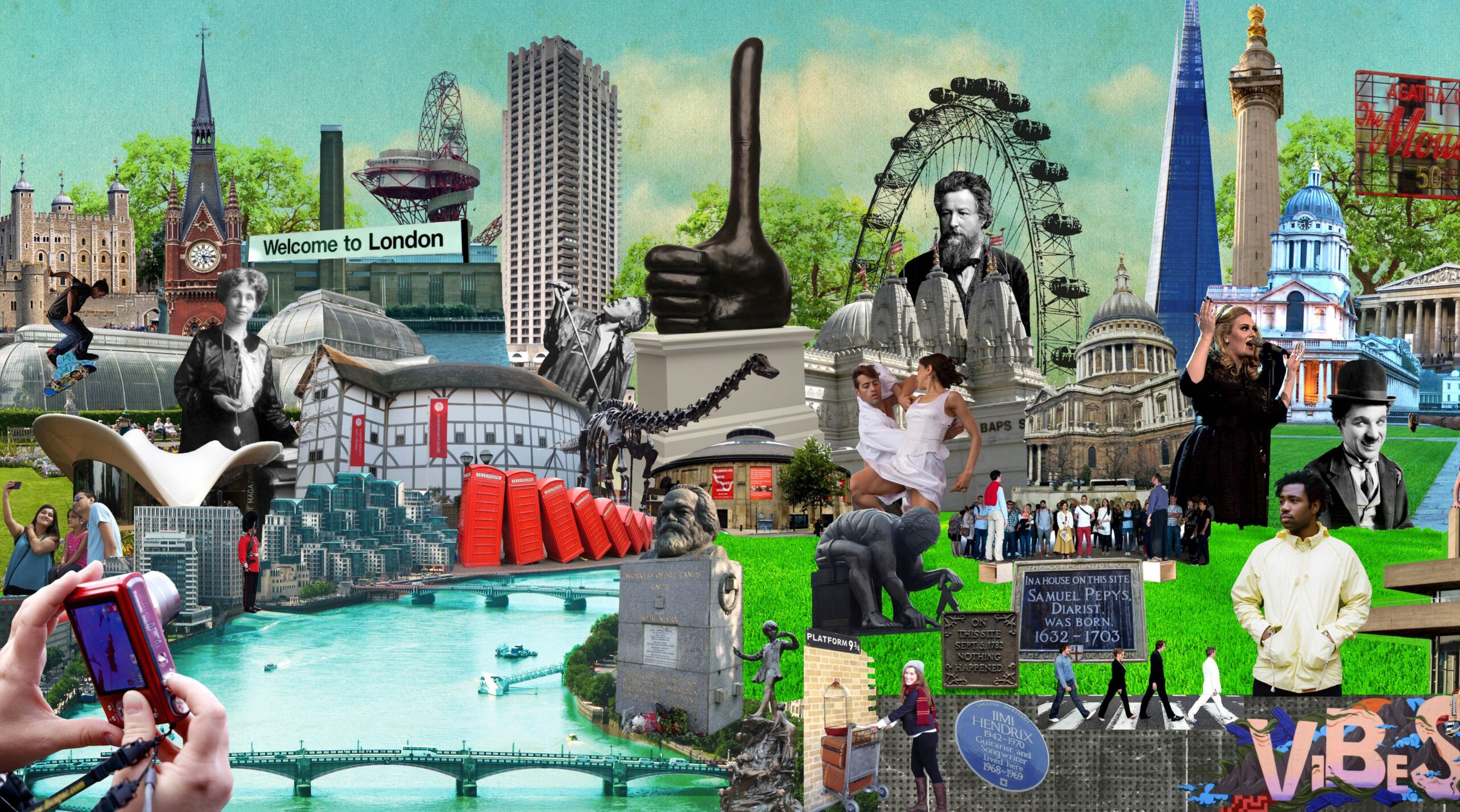
Photo: Michelle Thompson
Capitalising on culture
Two capital cities, London and Cardiff, are working collaboratively and over the long term to attract cultural tourists, Helen Palmer explains.
The usual starting point for destinations thinking about cultural tourism is usually economic – how to increase the number of visitors and visitor spend (and increase the number of bed nights). Any destination embarking on the cultural tourism journey quickly learns that in order to generate real and sustained economic impact, there is much more to be put in place first. And while short-term and tactical cultural tourism campaigns will deliver some results, for a long-term, sustainable, economic impact new ways of working are required, especially within and between the public and private sectors.
At Creative Tourist we have been working with the Mayor’s office at the Greater London Authority (GLA) on the development of the capital’s first cultural tourism vision which was launched in March. Why does one of the world’s leading cultural destinations need a cultural tourism strategy? Well, for precisely that reason: to maintain and develop its position in the league of global top cities. London needs to keep innovating and creating reasons for visitors to come back, and crucially to explore beyond the most iconic tourist hotspots. The city welcomes around 30m visitors a year but the top 20 attractions account for a staggering 90% of the visits, according to London & Partners Annual Visitor Survey and Annual Survey of Visits to Visitor Attractions, Visit England, 2013. First-time visitors want to tick off London’s famous sights, but cultural tourists are looking for richer and deeper experiences than just tick-box sightseeing.
London needs to keep innovating and creating reasons for visitors to come back
In the 2015 publication The Value of Cultural Tourism to London, cultural tourism generates £3.2bn a year for London’s economy, supporting around 80,000 jobs. We worked closely with the culture team at the Mayor’s office alongside London & Partners and Visit Britain to interrogate existing data on domestic and overseas visitor patterns, perceptions and motivations and to identify gaps in knowledge. We also consulted widely with cultural, travel, hospitality and tourism organisations across the capital to better understand what partnerships, campaigns and activities are already taking place that could help to better serve cultural tourism needs. The resulting cultural tourism vision outlines the ways in which, through collaborative working, London can more effectively articulate the breadth and diversity of its cultural and heritage assets, stories and neighbourhoods, to encourage more visitors and increased dispersal across the city. The vision outlines five key objectives:
- Connect the dots – encourage collaboration between sectors.
- Better understand the facts – fill in gaps in their knowledge of cultural tourism, especially regarding visitors’ preferences, decision-making and purchases.
- Amplify the voice of London culture – provide the right information to the right type of visitors via the best channel.
- Enhance the storytelling and enhance the experience – develop new ways to tell London’s cultural story and support an enhanced cultural experience for visitors.
- Maximise the benefits – promoting London as a gateway to the rest of Greater London, as well as across the UK.
The resulting action plan outlines how the GLA will create a framework of tactical workshops, toolkits, partnership projects and campaigns to co-ordinate the delivery of the cultural tourism vision. We are working on the delivery of the first of what will be a series of cross-sector workshops, designed to bring together cultural and tourism partners to maximise the impacts of their work for cultural tourists.
Last year, we worked with Visit Wales and Cardiff Capital Region Tourism on a feasibility study for cultural tourism for the Cardiff city region. Though a relatively geographically small capital city, Cardiff has a growing cultural offer set against the backdrop of stunning rural and coastal scenery and a strong national identity. However, the cultural offer is overshadowed by the dominance and popularity of the national sport rugby and negative perceptions of the city as hedonistic at weekends. With major opportunities such as Roald Dahl’s centenary in 2016, BBC Cymru’s move into the city centre, major new cultural capital developments and the growing influence of the university sector, there is an appetite to build on local, regional and national partnerships to reposition Cardiff as a cultural destination.
Our approach started by auditing the current offer – not just culture, heritage and tourism – but an honest appraisal of the complete visitor experience virtually and physically. Drawing our findings together we led a series of workshops with representatives from across the culture, tourism, transport, higher education, media and the creative industries to work through opportunities to collaborate. These workshops identified shared priorities and potential programmes of work, and tapped into existing city-wide initiatives led by Cardiff City Council and the new, national branding work by Visit Wales, bringing the role of culture to the fore.
This way of working is not just relevant for cities as we continue to adapt and adopt this approach for rural, county-wide, town or coastal destinations. While the need to understand cultural tourism’s economic value is important, to be able to make a political case for support and to work from an agreed benchmark, any destination thinking about how to tackle cultural tourism has to be committed for the long term. The willingness to work in partnership, not just with those you feel comfortable working with, but across the cultural and tourism divide must underpin a holistic approach to cultural tourism.
Helen Palmer is Director of Creative Tourist.
www.creativetourist.com
Join the Discussion
You must be logged in to post a comment.